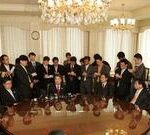Yugoslavia had always been a troubled state as a result of the mixture of diverse ethnicities and religious beliefs. Formed in 1918 from the union of the Kingdom of Serbia with the political entities of Slovenia, Croatia, and Bosnia-Herzegovina, Yugoslavia fostered Orthodox Christians, Roman Catholics, Muslims, and Protestants, but also minorities of Hungarians, Turks, Bulgarians and Albanians.
The events that eventually led to Yugoslav civil war and the split of Yugoslavia to six separate countries (Serbia, Croatia, Slovenia, Bosnia-Herzegovina, Montenegro and Former Republic of Macedonia) can be attributed to both political and religious causes.
In 1941, the annexation of Yugoslavia by the Axis Powers has led to the creation of puppet states. Croatia was a Nazi and Fascist puppet state, Serbia was a German state and Montenegro was initially an Italian state and after 1943 it became a German state, while other parts of Yugoslavia were directly occupied by Italy, Germany, Bulgaria, and Hungary. Josep Tito, the later leader of Yugoslavia, founded the Communist Party of Yugoslavia and organized the resistance movement against the Nazis, known as People’s Liberating Army of Yugoslavia (NOVJ). In addition, the Communist Anti-Fascist Council of National Liberation of Yugoslavia set the foundations for post-war establishment of the Yugoslavia as a Federal Republic. However, the fascist militia power of Croatia known as Ustasa created several concentration camps, in which Serbs, Roma (Gypsies) and Jews were imprisoned. At the most infamous Ustasa concentration camp, Jasenovac, a huge number of Jews, Serbs, and Croat resistance members were horribly executed according to the Nazi methods that the Croat nationalists used.
In 1945, after the Second World War and after having suffered ethnic and civil war, Yugoslavia was re-established and had expanded its borders to Istria and Dalmatia, formerly ruled by Kingdom of Italy. Moreover, the Communist Party had acquired the exclusive power in the post-war state. At the Yalta Conference (February 4 to February 11, 1945), the Big Three (Churchill, Roosevelt and Stalin) decided to “deliver” Yugoslavia to the Eastern block under the influence of the Soviet Union. However, because of the strong opposition of Tito to Stalin’s control, Yugoslavia came out of the direct influence of the Soviet Union, although it remained a country with a fundamentally communist system.
After Tito’s death, in 1980 and the slow decline of Eastern Block, Yugoslavia as many other countries faced serious economic problems. Poland faced severe political agitations, which led to the rise of “solidarnosk” (solidarity) which in 1989 would gain the first free elections of the Eastern Block and would be the beginning of end for the Iron Curtain. Similarly, the economic problems of Yugoslavia brought dissatisfaction and political agitations, which facilitated the resurgence of nationalistic passions and ideas in the region. What followed exceeded the expectations of the most pessimistic political analysts, who did not believe that Europe could experience another war in such a short period. Unlike Czechoslovakia that was split into two new countries without repercussions, the Serbs and the Croats engaged in a horrible civil war, which was based on their immense political and religious differences.
In 1981, nationalistic feelings kept on growing both in Serbia and Croatia. Slobodan Milosevic, the most popular politician of Serbia, openly supported a nationalistic program as a result of what Serbs had suffered from Croats during the World War II. At the same time, the Albanian minority of Kosovo demanded the nomination of the region as autonomous democracy, part of Yugoslavia. The revolt was anticipated from Communists of all nationalities as counteractive. After several protests of Serbs from the semi-autonomous province of Kosovo, that they were oppressed by the Albanian majority, police forces were dispatched in the region. In March 1989, the Serbian Parliament decided to drastically decrease the degree of autonomy of Kosovo and Vojvodina, where a large Hungarian minority resided. In June 1989, Milosevic, as the new President of Serbia and with the occasion of the celebrations of 600 years from the Battle of Kosovo, promised in a fire speech in front of one million Serbs that “no one will defeat us.
The Albanian minority asked for the help of Croats and Slovenians. In the mean time, the relationships of Serbia with both Croatia and Slovenia had severely deteriorated. In 1990, the Union of Yugoslavian Communists was split in national parties and in the first free elections that were held after 45 years, the nationalists gained power in all the regions.
Among these political agitations, comprehensive analyses of Yugoslav culture reveal that religion was the strongest cultural marker. Although, this does not clearly suggest that the Yugoslav civil war was based exclusively on religious differences, religion had often been used as a means to establish or emphasize barriers. Ethnic, linguistic or class dissimilarities were unstable foundations for the creation of ethnic identity and therefore religious associations became by default the only distinctive quality between the military parties. In addition, the church hierarchy of Orthodox Serbs and Catholic Croats realized that the development of distinctive religious groups might lead to ethnically distinctive communities, as it had happened to the Eastern Europe. Effectively, religion mobilized the ethnic elimination of minority groups such as Muslims and Protestants. At the same time, the leaders of Christian Orthodoxy and Catholicism expressed a blatant lack of sensitivity for the historical roots of their believers thus reinforcing old stereotypes and the formation of nationalist identity.

